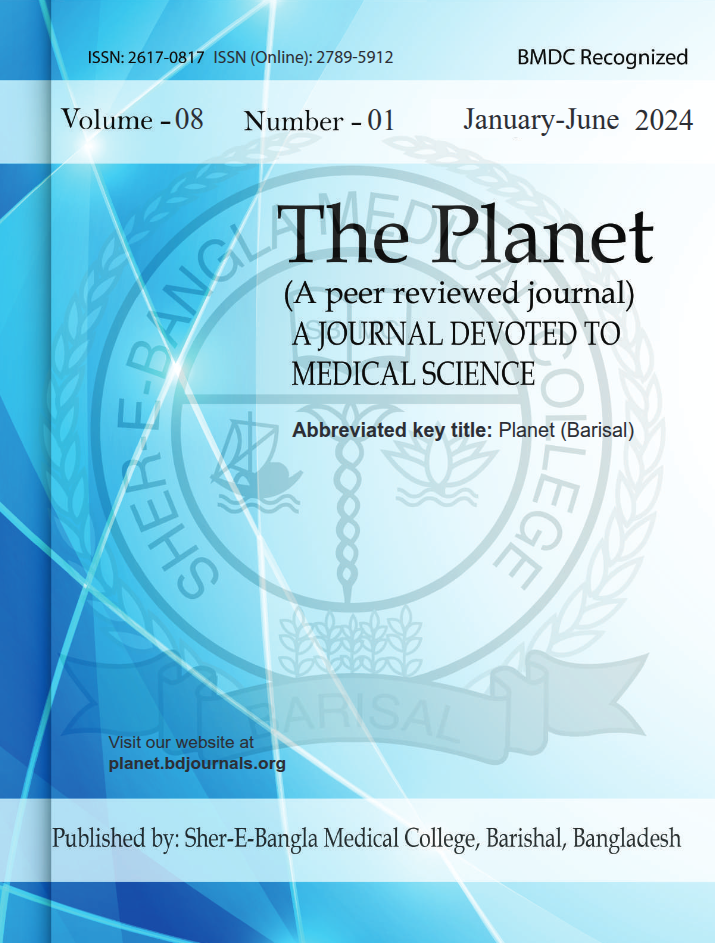Correlation between Acne Vulgaris Severity and Lipid Profile of the Patients Attending in a Tertiary Centre
Published 28-02-2024
Keywords
- Acne-vulgaris,
- Severity,
- Lipid profile
Copyright (c) 2024 The Planet

This work is licensed under a Creative Commons Attribution 4.0 International License.
How to Cite
Abstract
Background: Acne vulgaris (AV) is a common inflammatory skin disorder affecting adolescents and adults. Recent studies suggest a possible correlation between lipid metabolism abnormalities and acne severity. Dyslipidemia, characterized by imbalances in triglycerides, cholesterol, and lipoproteins, may contribute to acne pathogenesis. This study aims to explore the relationship between acne severity and lipid profile in patients attending a tertiary care center. Objective: To evaluate the correlation between the severity of acne vulgaris and lipid profile parameters, including total cholesterol, triglycerides, high-density lipoprotein (HDL), and low-density lipoprotein (LDL). Methods & Materials: This observational cross-sectional study was conducted at the Department of Dermatology and Venereology, Mugda Medical College & Hospital, Dhaka, Bangladesh, from July 2022 to December 2022. A total of 150 clinically diagnosed acne patients, aged 14–49 years were enrolled. Acne severity was assessed using the Global Acne Grading System (GAGS). Blood samples were analyzed for lipid parameters following standard laboratory protocols. Data were processed using Statistical Package for Social Sciences (SPSS) Version -23.0. Pearson’s correlation coefficient was applied to determine statistical correlation, with a significance level of p<0.05. Results: The study included 150 patients, predominantly females (94.7%), with the majority (46.7%) aged 14–19 years. Most participants (65.3%) had a normal BMI, while 25.3% were overweight and 2.7% were obese. Acne severity assessment showed that 60% had mild acne, 33.3% had moderate acne, and 6.7% had severe acne. Lipid profile analysis revealed that triglyceride and LDL levels increased with acne severity, while HDL levels showed a slight decline. Triglyceride levels were significantly higher in severe acne cases (206.50 ± 105.03 mg/dL) compared to mild cases (97.78 ± 53.32 mg/dL) (r = 0.405, p < 0.001). Total cholesterol and LDL levels also increased with acne severity (r = 0.227, p = 0.005 and r = 0.198, p = 0.015, respectively). However, HDL levels showed no significant correlation with acne severity (r = -0.063, p = 0.445). Conclusion: The study found a significant correlation between acne severity and elevated triglyceride, total cholesterol, and LDL levels, suggesting a possible link between lipid metabolism and acne progression. Routine lipid profile screening in acne patients may help identify metabolic imbalances early.



